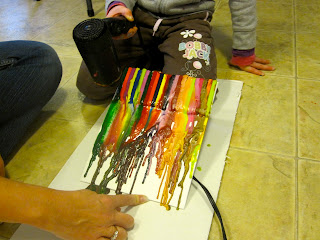 |
| Snowshoeing in the fresh morning snow. |
 |
| Cyrus our dog making a snowman. |
What can we do about
repetitive, harmful thoughts that we have a hard time not repeating to
ourselves when we feel down, tired, discouraged and/or depressed? We have all
tried cognitive therapy techniques for reframing negative thinking, thought
stopping processes and other methods, but some thoughts are difficult to
change. Perhaps there is something useful about some of our negative thoughts
and maybe it is not the thought that needs to change, but how we convey it to
ourselves. Maybe they carry a buried message or reminder that is important to
us, but because we say it to ourselves in such a demeaning negative or hurtful
ways, we can’t hear the positive intent. For example, if I find that I am
wasting time online, not exercising regularly or not using time productively, I
may begin telling myself that I am lazy, wasting time, etc. What I may really be
wanting is to remind myself that I want to find time to finish a book I started
writing and instead of surfing online I could be spending 20 minutes revising
and editing. The problem is that the voice in my head is demeaning so I won’t
listen. All I hear is that I am lazy or ill guided. I don’t hear the underlying concern or desire.
However, if I bring a nonjudgmental attitude to listening to my negative self-messages
I can see that if I soften the language of the messages, then I can hear that they
hold desires that I have to live better or in a more productive way. Just as I
need to bring a loving compassionate attitude to other parts of me, I need to
do the same for my negative thoughts. Instead of pushing them away and seeing
them as the enemy I can view them as being desperate and demanding, but also concerned
with my well being and growth. I can soften the language that these voices use
so that I won’t react against them, but be able to listen to them. Just as a
child can’t hear what is expected of them when a parent is yelling at them, I
can’t hear what my negative voice is saying when it is yelling at me. If I can
be kinder, softer with these fearful parts of myself, then I can hear the gift
of their concerns.
Try this Art Therapy Exercise:
Take a repetitive thought
that you have which you may label as negative or hurtful. Take a few minutes to reflect where this
voice came from (a parent, former partner, etc.), locate where in your body you
sense this part of you and see if there is an image of this voice or part of
you. Draw this part of you when it is talking to you in a critical way.
Now relax and get centered.
Take a few deep breaths, and from a place of presence, see if you can
re-imagine this part of you as it tells you in a softer, kinder way what its
real intent for you is. See if you can understand from its point of view what
it is wanting for you. Draw this part of you when it is talking to you in a
more yearning or kinder way.
Is there some value is this
criticizing part when it is seen in a different light?


















































